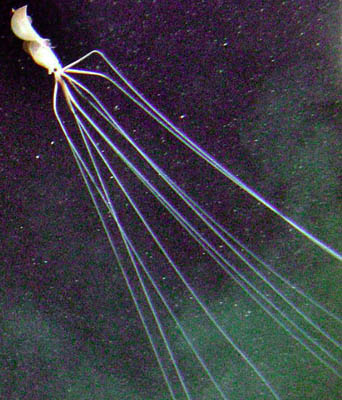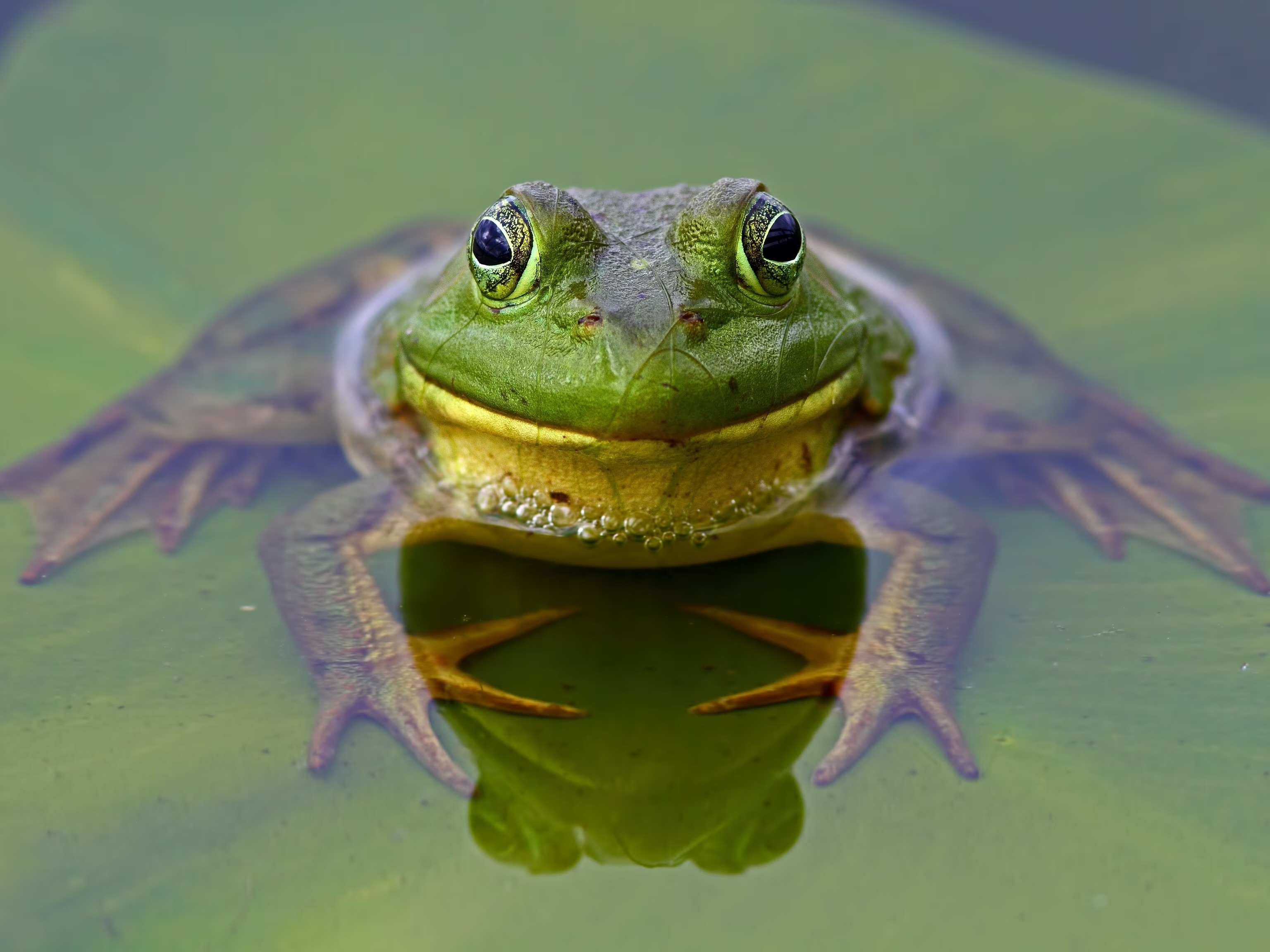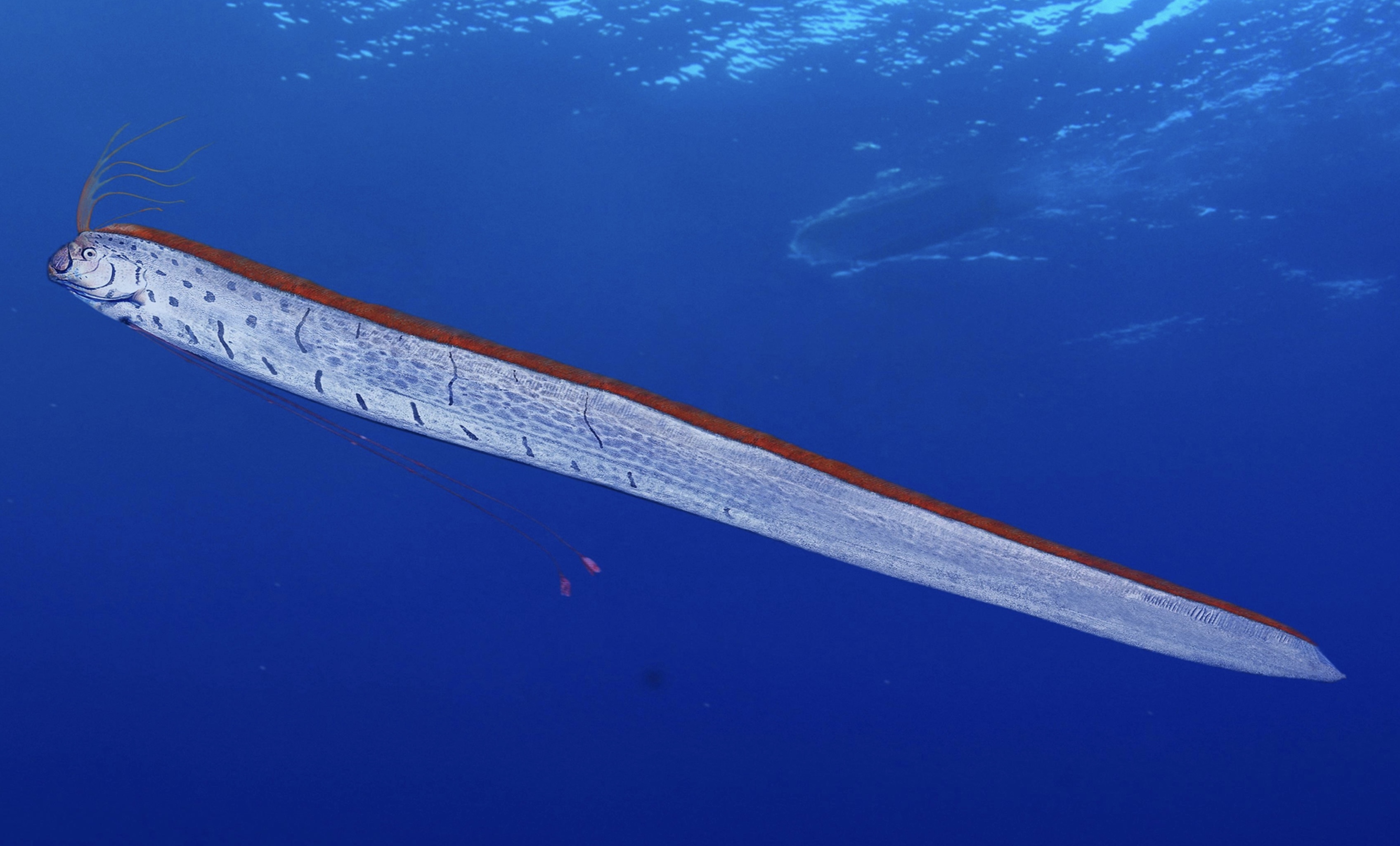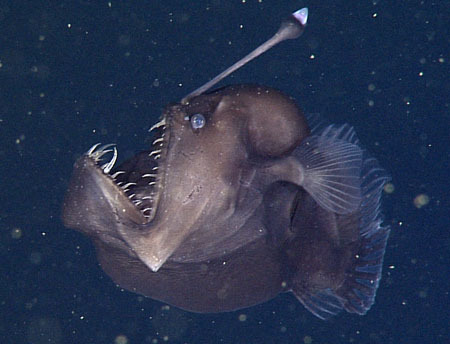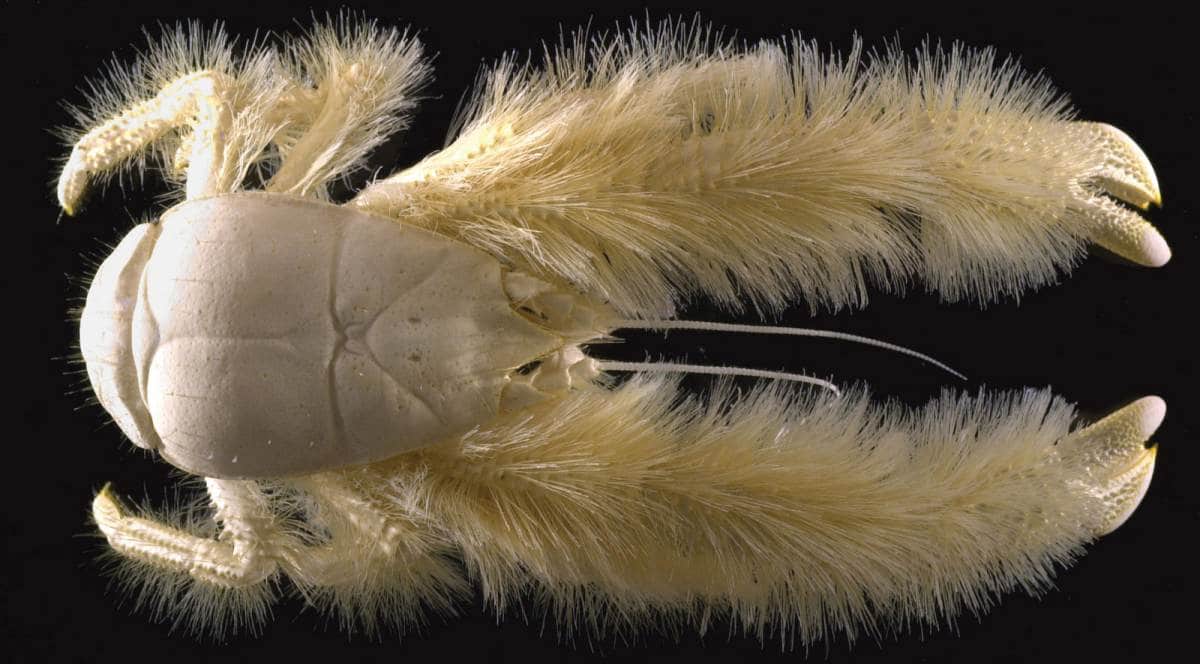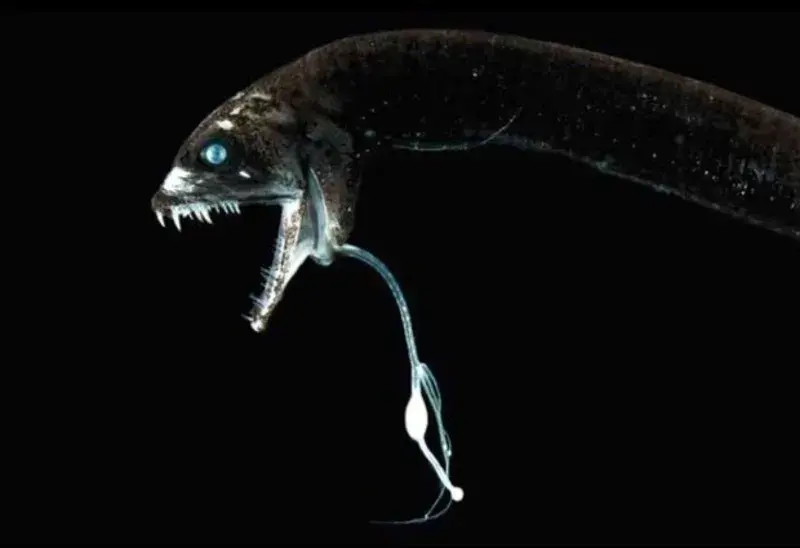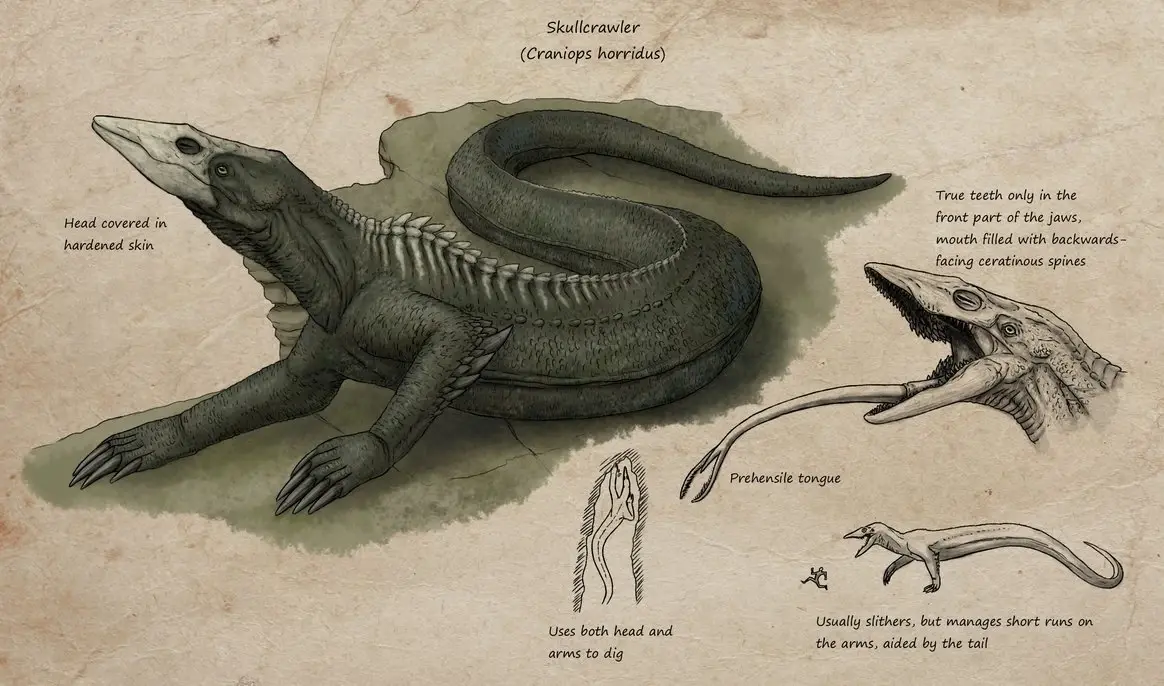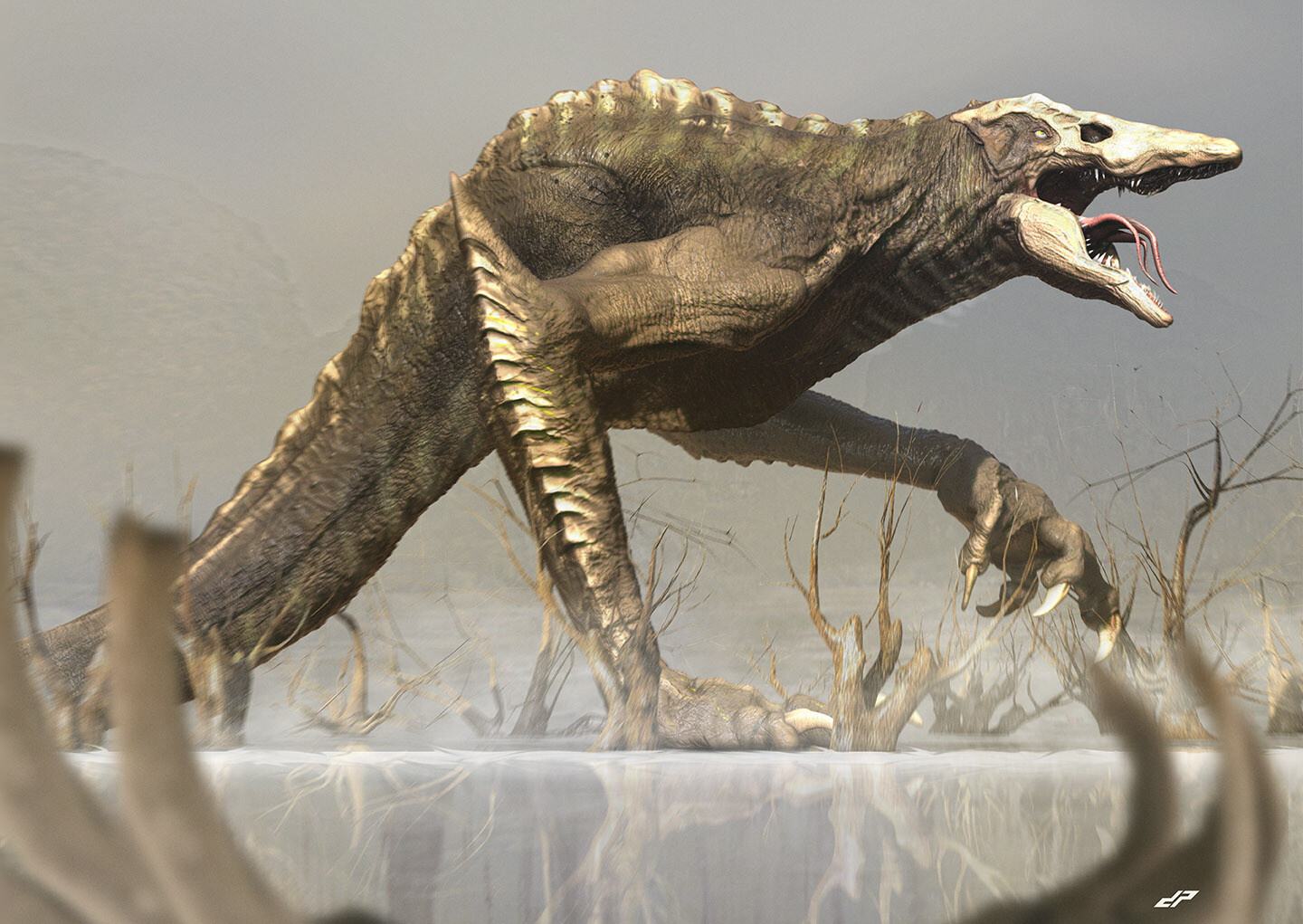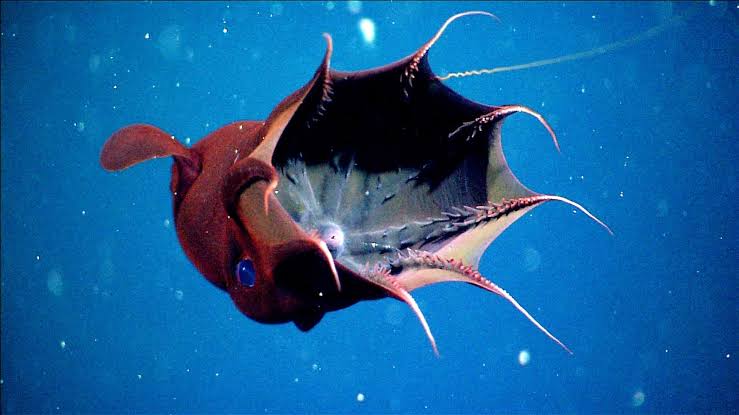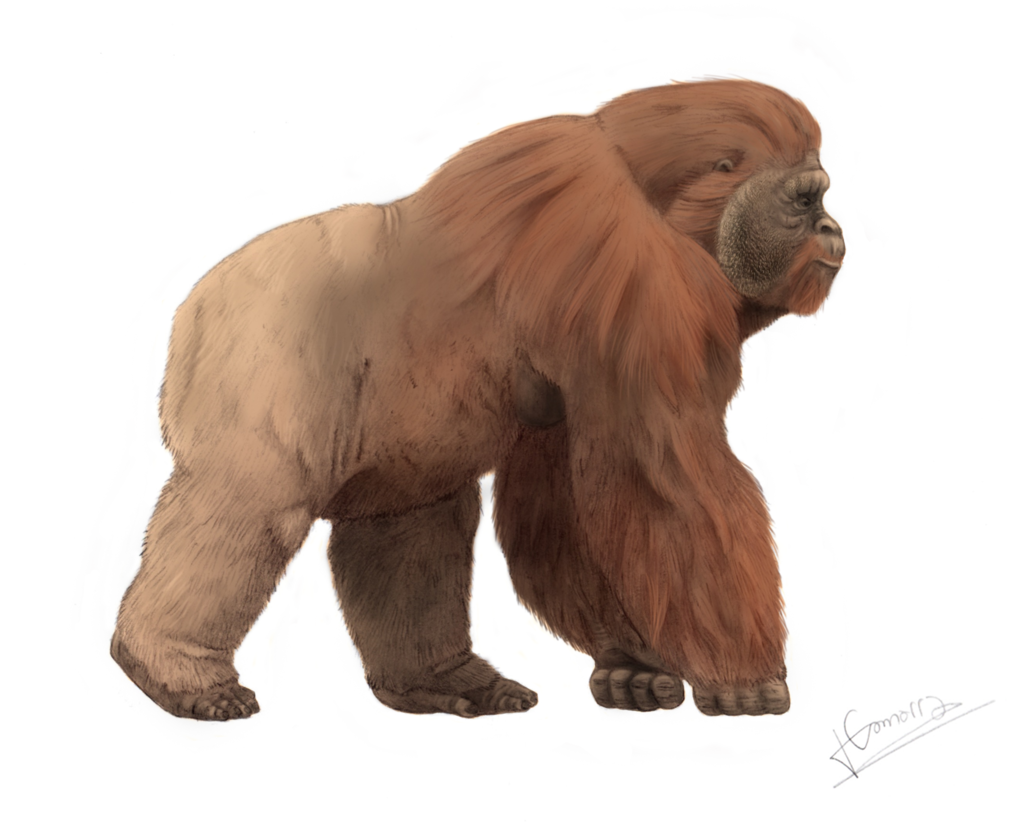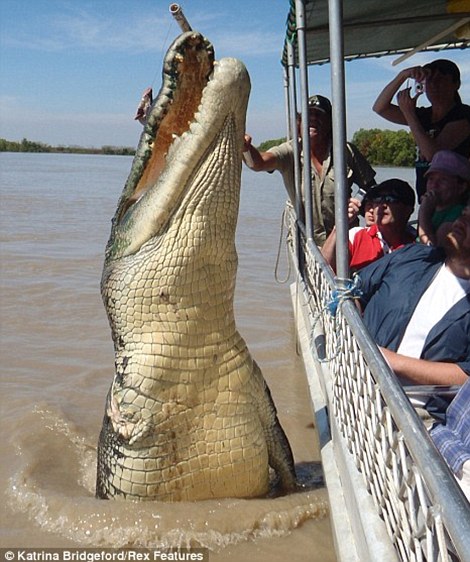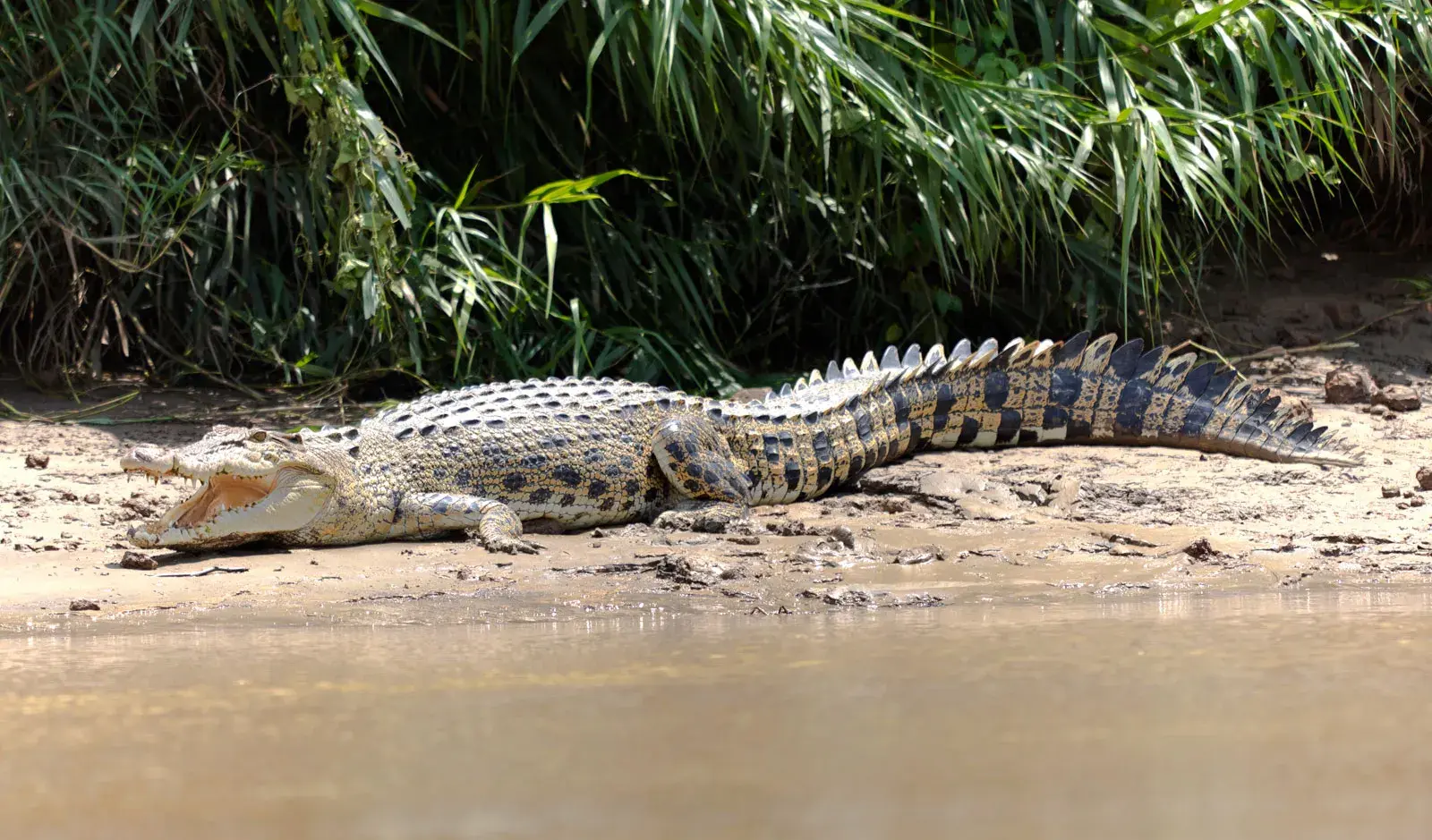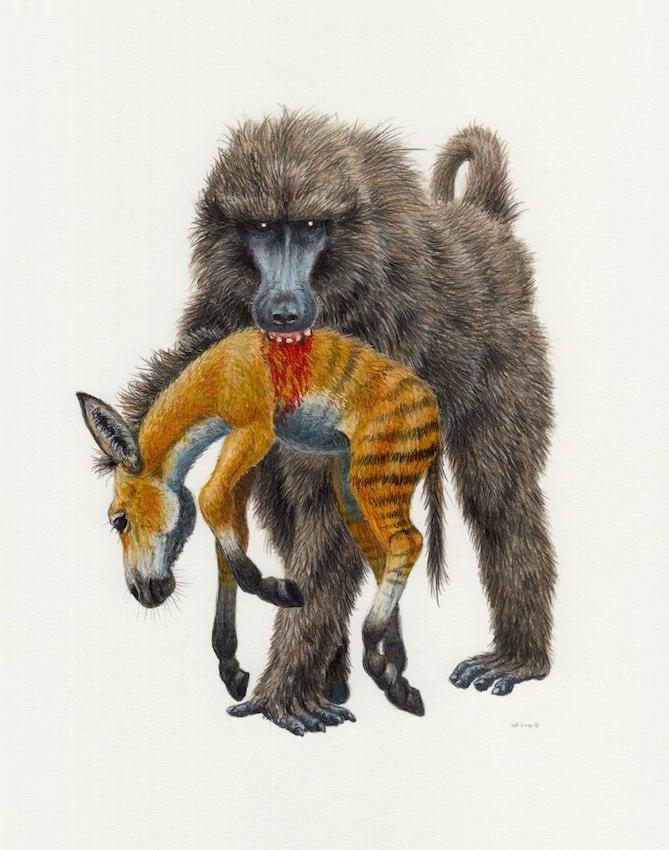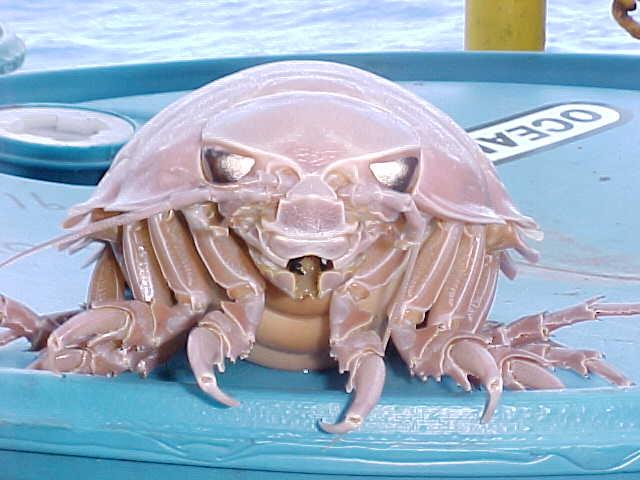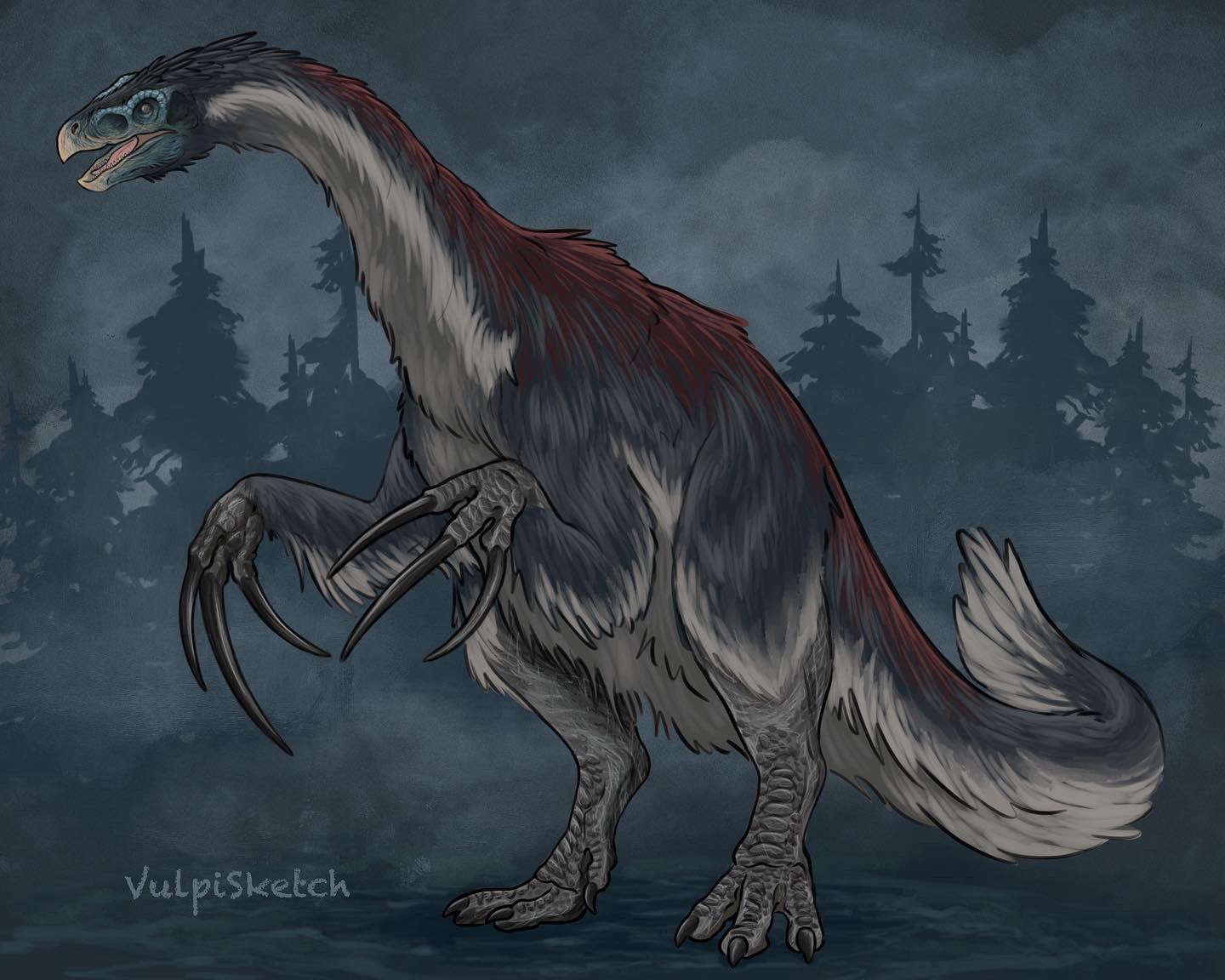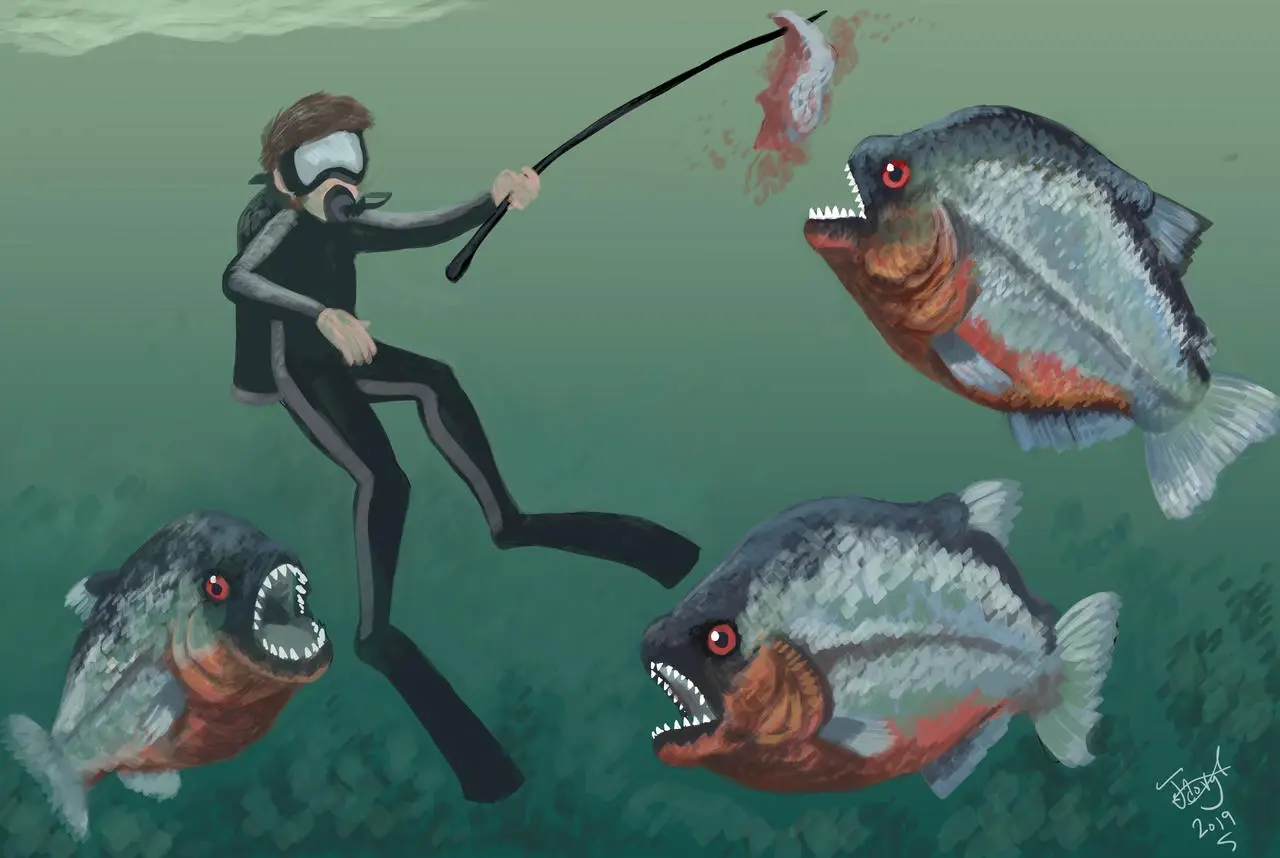Bigfin squids are a group of rarely seen cephalopods with a distinctive morphology. They are placed in the genus Magnapinna and family Magnapinnidae. Although the family was described only from larval, paralarval, and juvenile specimens, numerous video observations of much larger squid with similar morphology are assumed to be adult specimens of the same family. The presumed adult stage of Magnapinna is known only from video observations from submersibles and ROVs; no physical specimens have yet been collected, leaving their exact identity unknown. These individuals and the collected juvenile specimens share the very large fins and the vermiform arm tips with no suckers, but the iconic elongated arm tips are known only from observed individuals. Although it has not been directly confirmed whether these squid are the same as the Magnapinna known from specimens, it is largely accepted that they are members of Magnapinnidae. The specimens in the videos looked very distinct from all previously known squids. Uniquely among cephalopods, the arms and tentacles were of the same length and looked identical (similar to extinct belemnites). The appendages were also held perpendicular to the body, creating the appearance of strange "elbows". Most remarkable was the length of the elastic tentacles, which has been estimated at up to 15–20 times the mantle length. This trait is caused by filament coiling of the tentacles, a trait that is rare among similar species. Estimates based on video evidence put the total length of the largest specimens at 8 m (25 ft) or more, with some estimates up to 12 m (40 ft). Viewing close-ups of the body and head, it is apparent that the fins are extremely large, being proportionately nearly as big as those of bigfin squid larvae. While they do appear similar to the larvae, no specimens or samples of the adults have been taken. While their exact identity is unknown, all of the discovered specimens can be observed to have a brown-orange color body, translucent fins, near-white tentacles, and dark eyes. These species of squids are mainly identifiable by their long thin arms and specific colors. The squid also have a very unique brachial crown that sets them aside from the rest of other families that are known. Little is known about the feeding-behaviour of these squids. Scientists have speculated that the bigfin squid feeds by dragging their arms and tentacles along the seafloor and grabbing edible organisms from the floor. Alternatively, they may simply use a trapping technique, waiting passively for prey such as zooplankton to bump into their arms (see Cephalopod intelligence). The diet of the bigfin squid is unknown. However, cephalopods are known to feed on crustaceans, jellyfish, and even other cephalopods.
